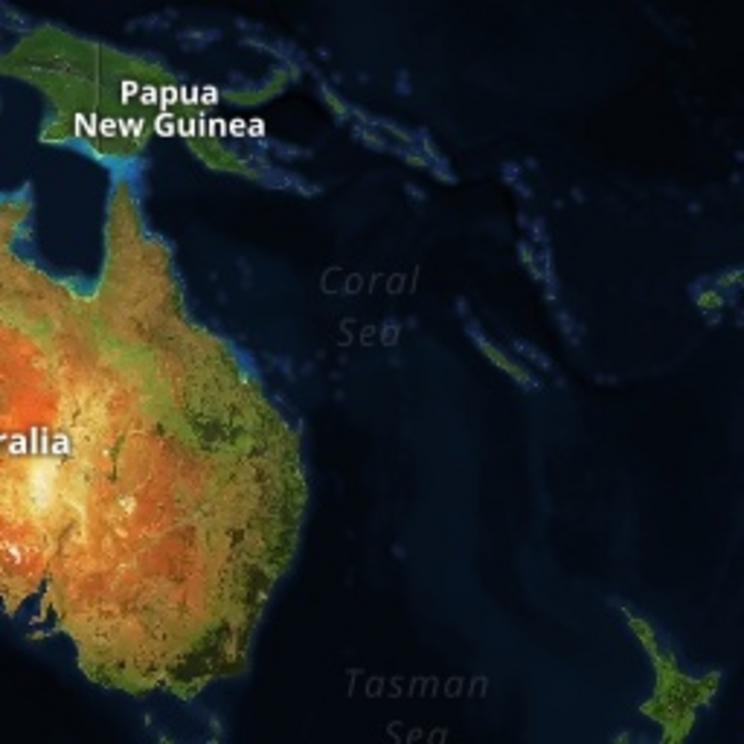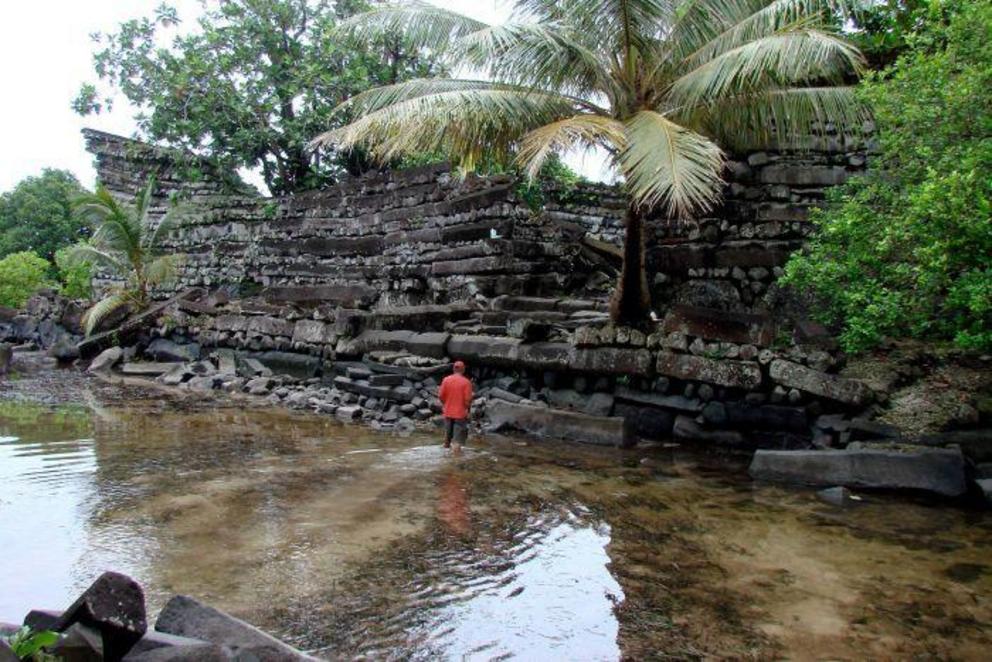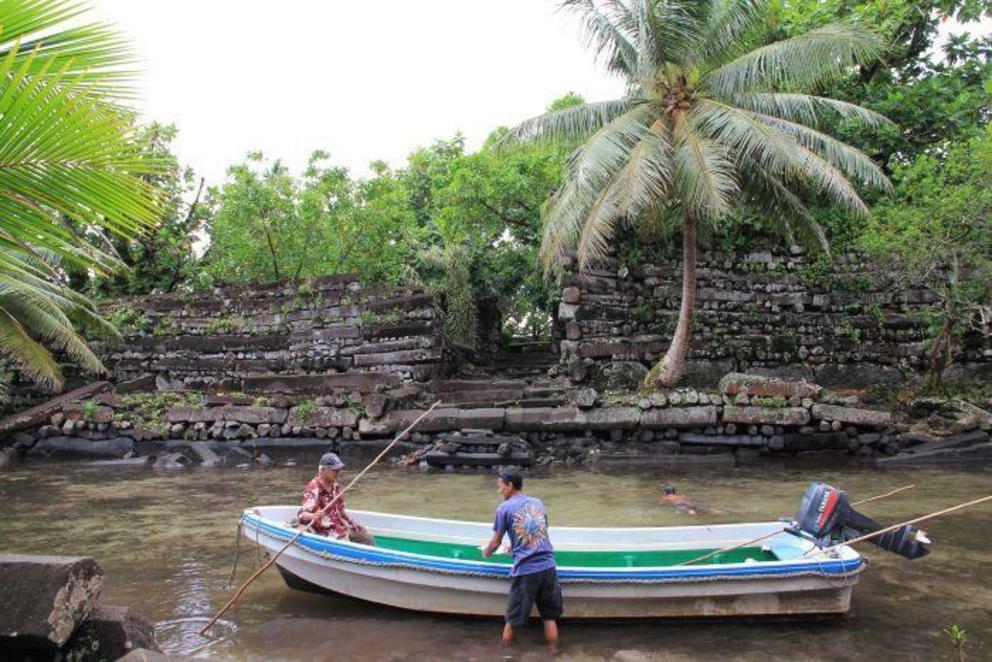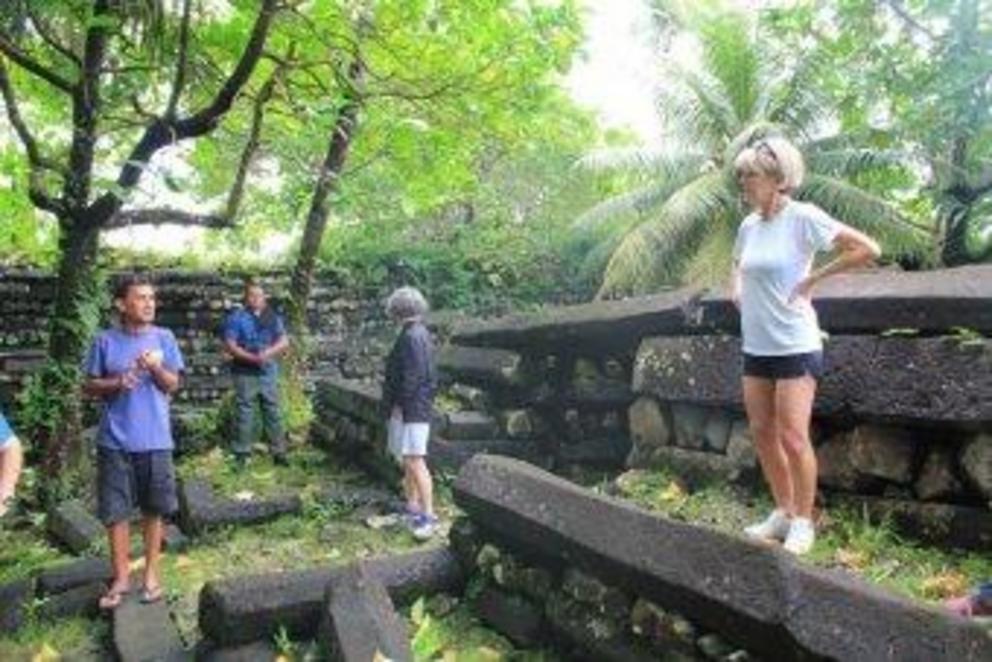Venice of the Pacific: the race to save the mysterious Micronesian ruins of Nan Madol
Visiting the ruins of Nan Madol in the Federated States of Micronesia is like stepping into an Indiana Jones movie.
Key points
- Canals connect 92 man-made islets over 200 acres built on basalt and coral boulders
- Built between the 13th and 17th centuries by the Saudeleurs before being abandoned
- Placed on world heritage list in 2016, but at risk from tourism, silt and mangroves
Twisted trees sprout from the massive, moss-covered stone columns that form the remains of centuries-old palaces, temples, and tombs.
It is an awe-inspiring place but despite the imposing presence of the ruins, the site is more fragile than it appears.
The man charged with protecting it said he could use Australia's help to preserve it for future generations.
'It's like the pyramids'
 Venice of Pacific: The site is surrounded by water, but this has led to damage from mangroves and rising seas.
Venice of Pacific: The site is surrounded by water, but this has led to damage from mangroves and rising seas.
The ABC visited Nan Madol with Foreign Minister Julie Bishop as she led a bipartisan delegation to the Federated States of Micronesia and two other North Pacific island countries last week.
After an hours' drive from Kolonia, the main town on the island of Pohnpei, a 15-minute walk through a mangrove jungle brings us to the main building, the Nandawas.
The walls of the Nandawas and the squat tomb-like building at its centre are built from columns of black basalt rock laid in a log cabin formation.
"This was the royal burial site," said our guide Augustine Kohler, the country's National Historic Preservation Officer.
Unlike other famous historic sites like Cambodia's Angkor Wat or Stonehenge in England which attract swarms of tourists, we have Nan Madol to ourselves.
"This is extraordinary," Ms Bishop said as she stepped off the boat. "It's like the pyramids."
'Venice of the Pacific' and 'Eighth Wonder of the World'
 Map: An interactive map showing Nan Madol's location in relation to Australia.
Map: An interactive map showing Nan Madol's location in relation to Australia.
Nan Madol has been dubbed by some as the "eighth wonder of the world" and others as the "Venice of the Pacific".
The reference to Venice comes from the canals that connect 92 man-made islets spread over 200 acres built with basalt and coral boulders.
 Ruined steps open into a walled area at the ruins of nan Madol in Micronesia.
Ruined steps open into a walled area at the ruins of nan Madol in Micronesia.
Most of it was built between the 13th and 17th centuries by the Saudeleurs, the descendants of two mysterious brothers who founded a religious community in the sixth century.
Even today scientists still do not know how the rocks, some weighing 50 tonnes, were transported to the site from elsewhere on Pohnpei.
Local legends claim magic was used to fly them in.
Despite its undoubted historic and cultural significance, Nan Madol was only placed on UNESCO's World Heritage List in 2016.
It also sits on the organisation's world heritage in danger list due to a range of threats including the build-up of silt in the canals, allowing mangroves to flourish and undermine the stone edifices.
Not ready for mass tourism … yet
 The ceremonial center of Nan Madol in Eastern Micronesia, Pohnpei Island.
The ceremonial center of Nan Madol in Eastern Micronesia, Pohnpei Island.
Mr Kohler said he believed another potential threat was the possibility of an increase in the number of international tourists coming to the site.
"Now that it's a World Heritage site there is a slight increase in the number of people coming and I know there will be an impact so we will need to mitigate that," he said.
Mr Kohler said neither Nan Madol or the country as a whole was ready for the massive influx of foreign visitors that other small North Pacific countries have experienced in recent years.
"I've been to Palau, I've been to Saipan and to be honest I don't want that happening here," he said.
"We don't have the infrastructure for any large number of people and I think the impact they will have on our sites will be devastating."
Australian help needed to ensure sustainability
 A network of canals meant the isolated site needed all food to be brought in by boat.
A network of canals meant the isolated site needed all food to be brought in by boat.
The aim of Ms Bishop's trip to the north Pacific was to strengthen Australia's relationship with the region's small island states.
Mr Kohler said he could use Australia's help to promote sustainable tourism and draw up a management plan for Nan Madol.
"That's the kind of assistance I will need from Australia, either technical or funding in helping preserve sites such as Nan Madol."
 Julie Bishop at Nam Madol ruins, which the Australian Government is looking at helping preserve.
Julie Bishop at Nam Madol ruins, which the Australian Government is looking at helping preserve.
Ms Bishop said the Australian Government would be happy to help.
"The North Pacific will be reliant on sustainable tourism and we want to ensure that the local people have the capacity to decide for themselves what kind of tourism they want here," she said.
Mr Kohler said he believed sustainable tourism, not tourism at any cost, would be the key to the future of the ancient site.
"We want to save this not only for our visitors but for our future grandchildren," he said.
"We want them to grow up knowing that we have such wonderful places like Nan Madol."
 Built over several centuries, the ruins were eventually abandoned in the mid 17th century.
Built over several centuries, the ruins were eventually abandoned in the mid 17th century.

